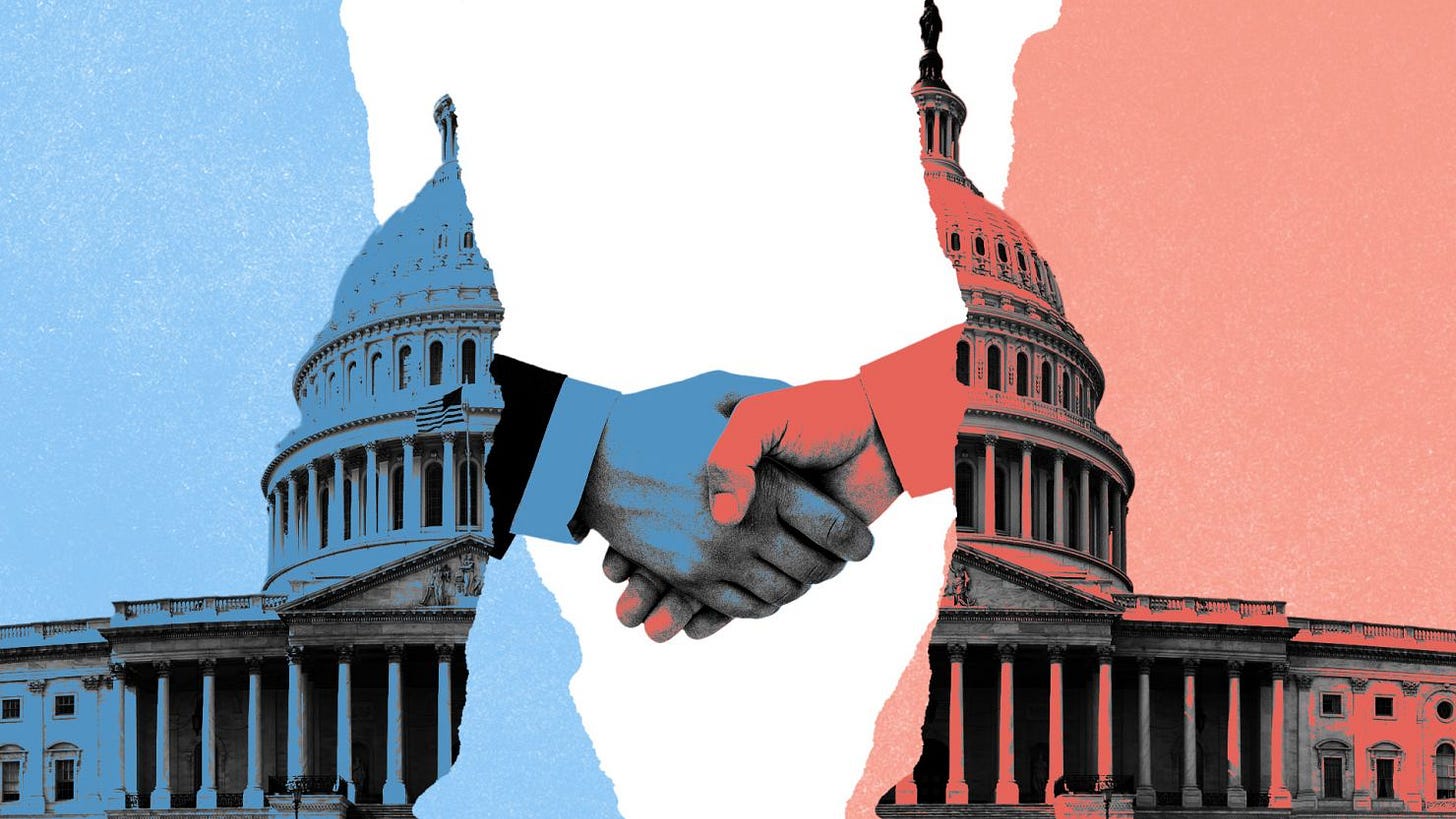Before we get started, I wanted to let you know the new episode of my podcast Room to Run is live on Spotify and Apple Podcasts.
In this week’s episode we discussed:
Who I’m voting for in the US presidential election
Your 2024 election playbook
Which mega cap stock is a buy after earnings?
Preview of next week’s market moving events
Each 10-minute episode can be listened to for FREE on Spotify and Apple Podcasts. If you enjoy the podcast, please leave a review.
I’m not here to preach about how you should vote.
Everyone has had different life experiences that influence how they view the world, and those views are reflected in who we vote for.
I haven’t had the same lived experience as you, just like you haven’t had the same lived experience as me. So it makes sense that we may vote differently.
But if I had it my way, there’s only one thing I’d want to happen on election night…
…and it may surprise you.
Who Cares Who’s President Anyway?
The market does not care much about which party occupies the White House.
Despite both Democrats and Republicans holding power, the S&P 500 has posted positive returns 75% of all years since 1921.
Democrats have delivered slightly higher returns since the 1960s, averaging 10% per year compared to 4.8% for Republicans. However, the reasons the S&P 500 rises and falls—corporate earnings, interest rates, technological trends, etc.—are often much bigger and beyond the control of the executive branch.
Certain sectors will do better in the near-term depending on who’s in office (you can see three stocks for each Trump and Kamala here) but the overall market should do well regardless of who’s in power.
That said, there is one scenario I’m hoping for.
The Holy Grail of Presidential Election Outcomes
As an investor, I am voting for a divided government.
The ideal election outcome for investors isn’t about who wins the presidency or controls Congress; it’s about ensuring no single party has full control of the presidency, House, and Senate.
Decades of stock market data reveal that divided government produces the best results for stocks. According to Fidelity Investments, since 1928 the S&P 500 has averaged an annual return of 8.2% during periods of divided government compared to 7.4% during periods of unified government.
This conclusion is echoed by CFRA Research which found from 1945 to 2022, the S&P 500 has posted an average annual gain of 7.2% under divided government, outperforming the 6.5% average return seen under unified government.
The reason is simple; the market values stability above all. When no single party controls all branches, sweeping legislative changes are far less likely.
The Allure of Political Gridlock
Political gridlock provides predictability, which the market thrives on, keeping tax policies, regulations, and other economic factors stable.
Consider the Dodd-Frank Wall Street Reform and Consumer Protection Act, enacted in 2010 under unified Democratic control.
This legislation introduced sweeping regulations for financial institutions in response to the 2008 financial crisis. While it aimed to increase oversight and prevent future crises, it also added regulatory costs for banks, which impacted their profitability. Later, when Republicans gained power, they rolled back portions of Dodd-Frank, creating uncertainty for the financial sector as banks adjusted to shifting compliance requirements.
Another example is the Tax Reform Act of 1986, passed when Republicans held the presidency and Senate. This act simplified the tax code but also eliminated many deductions, impacting businesses and real estate markets. When Democrats regained power, there was speculation about changes to the tax code, generating further uncertainty as businesses awaited potential reversals.
These swings in policy create challenges for companies trying to make long-term plans, as shifting regulations and tax implications add layers of unpredictability.
As election night approaches, I’m closely watching the Senate and House results as well as the presidential race. If gridlock is maintained, it could spell good news for markets.
This election season, it’s not about picking sides but recognizing how the election results will influence the market environment. As always, I’m watching for the signals that matter to ensure me and my 1,000 investing community members are positioned to profit from any all scenarios (you can see my full portfolio here).
And whatever happens, just remember to keep a long-term perspective.
Stay safe out there,
Robert









